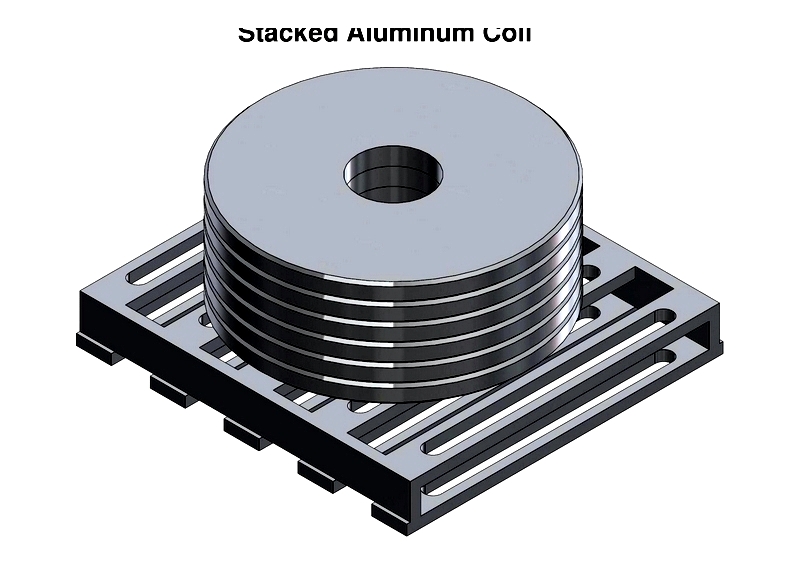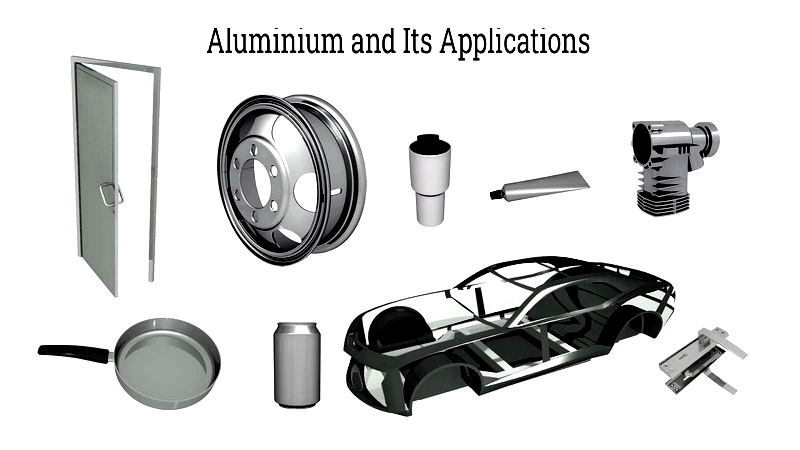Introduction
This article provides an in-depth exploration of aluminum types.
Continue reading to learn about:
- What is Aluminum?
- Aluminum Grades
- Applications of Aluminum Grades
- Types of Aluminum Products
- And much more...

Chapter 1: What is Aluminum?
Aluminum, Earth's most abundant metallic element, rarely occurs in pure form naturally. Its alloys are valued for their low density, excellent strength-to-weight ratio, durability, and corrosion resistance. With a density 2.5 times lower than steel, aluminum serves as an ideal alternative where weight reduction is crucial.
Aluminum alloys demonstrate remarkable ductility and malleability, facilitating easy shaping and machining. They also exhibit superior electrical and thermal conductivity, along with non-sparking and non-magnetic characteristics. Highly recyclable, aluminum requires only 5% of the original production energy when remelted. Remarkably, 75% of all aluminum ever produced remains in use today, maintaining its original properties and contributing to sustainable practices.

Chapter 2: Aluminum Grades in Manufacturing
Manufacturers enhance pure aluminum's properties by alloying it with various elements, creating different grades. The Aluminum Association maintains a standardized classification system that categorizes these grades based on primary alloying elements and their response to mechanical and thermal treatments.
Aluminum alloys fall into two main categories: wrought and cast, each with distinct identification systems. The fundamental difference lies in their processing - cast aluminum is melted and poured into molds, while wrought aluminum is worked in solid form.
The manufacturing processes yield alloys with unique characteristics, making grade selection critical. Cast aluminum contains higher alloying material proportions, whereas wrought aluminum offers superior tensile strength.
Wrought Aluminum
Wrought aluminum exhibits exceptional mechanical strength and can be formed into diverse shapes. Production involves smelting aluminum ingots with precise alloying metal amounts, then mechanically processing through rolling, forging, or extrusion. Heat treatment further enhances the alloy's properties.
Key advantages include:
- Outstanding mechanical properties
- Defect-free structural integrity
- Smooth surface finish
- Excellent weldability and machinability
- Superior formability for various shaping processes
The four-digit coding system identifies wrought aluminum grades:
- First digit: Primary alloying element determining series properties
- Second digit: Alloy modification status (0 indicates original)
- Third and fourth digits: Unique alloy identifiers (indicate purity for 1000 series)
The 1000 series represents purest aluminum with lowest strength, while the 7000 series (magnesium, zinc, copper alloys) offers highest strength.
Wrought Aluminum Series
1000 series
The 1000 series contains at least 99.0% pure aluminum with minimal alloying. These non-heat-treatable alloys offer exceptional corrosion resistance and superior conductivity. Their ductility facilitates significant deformation, though their low strength limits applications.
- Aluminum 1100, the most common grade, features good conductivity for heat exchange applications and excellent formability for cold working processes.
- Its ductility makes it ideal for annealing and forming into various shapes through extrusion or bending.
- While weldable using conventional methods, 1100 isn't suitable for high-pressure applications and can only be hardened through cold working.
- Aluminum 1350, with high electrical conductivity, is preferred for transformers and electronic components.
2000 Series
Containing 0.7-6.8% copper, the 2000 series offers enhanced strength and machinability. These heat-treatable alloys maintain strength across temperature ranges but show reduced ductility and corrosion resistance.
Primarily used in aerospace applications, their copper content enables precipitation hardening but complicates welding due to hot cracking risks.
- Aluminum 2011 excels in machinability for high-speed operations but requires coatings for corrosion protection.
- Aluminum 2024 provides high strength and fracture resistance for heavy-duty applications, though it also needs protective treatments.
3000 Series
With 0.05-1.5% manganese, the 3000 series offers improved strength over pure aluminum while maintaining excellent corrosion resistance and formability.




